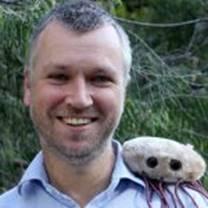C3 Seminar: Nick Coleman
Biodegradation of 1,2-dichloroethane : from microbial ecology to synthetic biology.
Dichloroethane (DCA) is a xenobiotic chemical that has been widely used for plastics manufacture. DCA is a problematic pollutant at many industrial sites, including the Botany Industrial Park in south Sydney.
The Coleman lab has been working on developing bioremediation methods for the cleanup of DCA and similar chlorinated pollutants, especially at the Botany site. We have isolated several bacteria from this site that can grow on DCA as a carbon and energy source, and determined the genetic basis of this capability. We have developed a molecular assay based on quantitative PCR to track these bacteria through space and time, and this has allowed us to determine that they are widespread at Botany, even in deep aquifer zones which should be inhospitable for aerobic bacteria.
We are working on creating a synthetic microbe which can biodegrade DCA, in order to understand how this ability evolves in natural environments, and to act as a platform for making degraders for other chlorinated pollutants that currently lack biodegradation mechanisms.
Light refreshments provided after talk - All are welcome!
About the speaker
Dr. Nick Coleman – School of Life and Environmental Sciences, University of Sydney

Dr. Nick Coleman is a Senior Lecturer in Microbiology in the School of Life and Environmental Sciences at the University of Sydney. Nick did his PhD at USyd, researching bacteria that can biodegrade explosives.
He then worked as a postdoc at Tyndall Air Force Base in Florida (USA), studying bacteria that biodegrade chlorinated solvents. He did a second postdoc at USyd, looking at mobile genetic elements.
He became a lecturer in 2006, and set up a lab that is centred on understanding the mechanisms that microbes use to adapt to anthropogenic chemical stresses. This encompasses ‘environmental’ problems such as pollutant bioremediation, but also ‘clinical’ problems such as the evolution of multiple antibiotic resistance elements.
